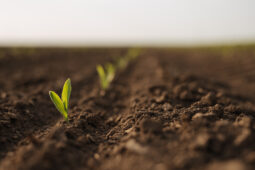The significance of gut health in aquaculture is gaining more attention. The digestive systems of fish and shrimp are the direct result of the development of stable, desirable gut microflora, and optimal gut microflora impacts feed efficiency, performance and overall productivity.
Fish and shrimp are highly subjective to exchanges of microflora between the environment and their digestive systems. These fluctuations increase the risk of rapid growth of undesirable gut microflora and quick destabilization, which can negatively affect the functioning of the digestive system. Because the digestive systems of fish and shrimp are the primary source of bacterial, viral, and parasitic infections, managing gut health is crucial for the profitability of aquaculture production.
The key to optimizing production yield and profitability in aquaculture is dependent on establishing and maintaining stable, well-balanced microflora in the digestive system.
Modulating Microflora with Natural Compounds
There are sustainable approaches to regulating the gut microflora in aquaculture. These include the use of a variety of natural compounds that are proficient in regulating the microflora toward favorable composition, such as probiotics, prebiotics, organic acids, yeast extracts, and phytobiotics. Strategies such as these offer coactive effects. Phytobiotics, for example, are able to strengthen the establishment of probiotic bacteria, thus enhancing the effectiveness of probiotics. Read more about probiotic use in hatchery production systems here.
Fish Efficiency
In order to meet the increasing global demand for animal protein, the future will be reliant on growth in the aquaculture segment of food production. Thus, there is increasing reliance on keeping fish healthy, farming them efficiently, and reducing the environmental impact of raising them.
Fish are efficient and a sustainable source of protein. When compared to land mammals, they require less energy, meaning the amount of food required to produce edible meat is low. This is known in the industry as feed efficiency. The issue is that people can no longer rely on natural water bodies alone to provide the quantity of fish needed, so the alternative is raising fish in man-made systems, the fastest growing sector of food production.
According to the World Bank and the Food and Agriculture Organization of the United Nations, at least 60% of fish for food will be produced by aquaculture by 2030, as opposed to fish caught in the wild.
Importance of Gut Health
Aquaculture waste and its effect on the environment have become more of an issue resulting in increased disease pressure among farmed fish and shrimp (read more about managing water quality). Because the gut is the primary peptic and largest immune organ in fish and shrimp, damage to the gut could potentially lead to decreased appetite, slow development, reduced ability to digest and absorb nutrients, and an increased incidence of disease, among other problems.
The gut has several functions, but digestion and nutrient absorption are the most important. Fish and shrimp don’t have intestinal glands like mammals. The gut of aquatic animals secretes the required digestive enzymes by way of goblet cells to aid in digestion and absorption.
One of the most important aspects of fostering healthy aquaculture is the feed, which impacts the gut directly. Although fish feeds are manufactured under high temperatures and high pressure for feed hygiene, several plant protein sources may contain anti-nutritional aspects, which can damage the gut. Additionally, low-value proteins, peroxide lipids, mycotoxins and other dangerous factors remain a threat.
The expansion of aquafeed demand and increased competition among feedstuffs has led to increased price competition. While competition is generally good for the producer, cheaper feeds often contain high amounts of low value plant protein sources. These high levels of plant-based protein can have an unfavorable impact on gut health, and therefore contribute to decreased immunity and survivability.
Beneficial Feed Additives
The highest production cost for aquaculture producers is feed. While it is important for producers to keep feed costs as low as possible, quality trumps cost. A low-quality feed may actually cost more in the long run, if it causes rapid changes in microflora and therefore, triggers detrimental effects on gut health.
BiOWiSH® MultiBio 3PS is a powerful blend of microbes that increases feed attractiveness and digestibility, which improves feed efficiency and performance. This product can be coated onto feed on the farm or at the feed mill and allows beneficial microorganisms to flourish within the gut. As a result, fish and shrimp are more likely to achieve improved immunity and survivability, therefore making aquaculture more efficient and more profitable.
For more tips on making aquaculture profitable, click here.





